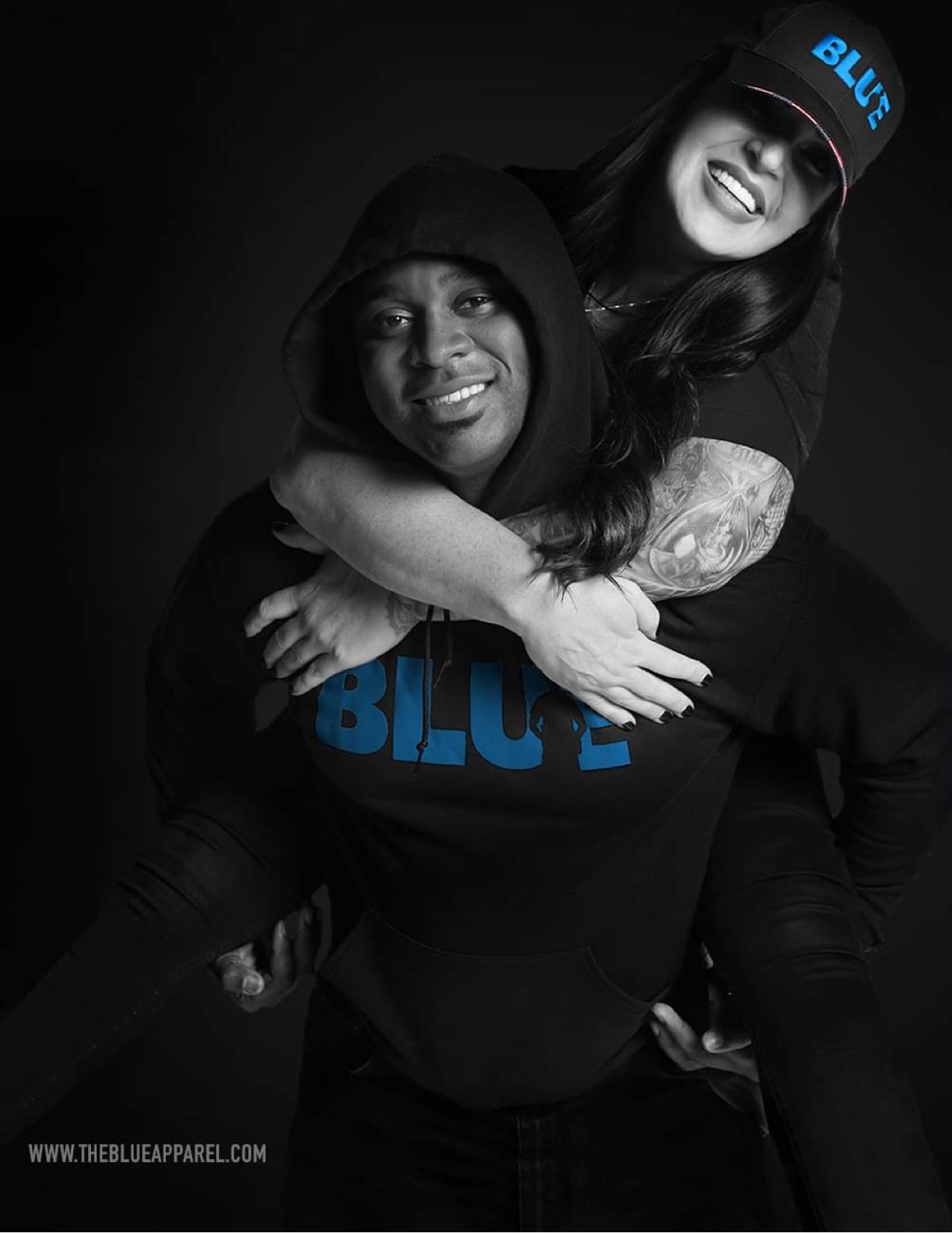The Horror of Real Hand-to-Hand Combat: A Case Study from the Ukraine War
/The Horror of Real Hand-to-Hand Combat: A Case Study from the Ukraine War
By: Dr. John Giduck, JD, Ph.D.
All the tactical professions need to enter a new era of reality-based close-quarters battle preparedness. Nowhere is that truer than with American police. Every day, police must put their hands on often-resistant suspects, far more than the military does. This translates to the necessity that current defensive tactics (DT) training abandon systems that are more fashion than effectiveness. To not do this, risks the safety and lives of our officers. This reality is a focus of my just-released book 1500 Years of Fighting: The Complete Book of Russian, Ukrainian and Soviet Martial Arts From Cossacks to Spetsnaz and Beyond. It includes a critical analysis of the fighting training of US military, Special Forces and law enforcement (LE) relative to the peerless ability of the Russians, who employ systems that began to be developed 15 centuries ago and have been evolved for modern policing and military operations.
On 2 Jan 2025, SOFX posted video footage from a GoPro camera mounted on a Ukrainian soldier’s helmet that documents a hand-to-hand engagement between he and a Russian soldier that concludes with the Ukrainian’s death (https://www.sofx.com/graphic-helmet-footage-captures-intense-hand-to-hand-combat-between-ukraine-and-russian-soldiers/). The Ukrainian soldier involved in the incident, whose identity has not been released, was participating in a clearing operation in the area. There are two video versions on the site. One is 15 minutes long and the other 8:04 in length.
The longer footage begins with Ukrainian drones striking targets in the area that was later cleared by ground forces. The Ukrainian soldier engaged in a firefight, then encountered the Russian combatant. The ability to discern everything that occurs is difficult. I viewed this tape at least a dozen times, slowing it down to quarter-second increments and freezing the frame continuously to determine what exactly occurred in each moment. I compiled a step-by-step analysis of this close-quarter fight in the Ukraine War from the eight-minute tape. The full time-elapsed narrative can be found on my book’s website under the Articles section @ www.giduck-books.com. This is the very combat reality that I address in-depth in 1500 Years of Fighting. In the book I critically examine the most popular martial arts today, and assess the US Army’s adoption of Brazilian Jiu Jitsu (BJJ) techniques vis-à-vis their efficacy in real world hand-to-hand combat scenarios. However, the same is needed for many police departments’ and SWAT teams’ defensive tactics training programs.
Points that are emphasized in the book include never going to your back with an opponent pulled on top of you, unless absolutely necessary. This technique has come to be known as the Gracie Guard and is a favored move in Brazilian Jiu Jitsu (BJJ). With it, you lie on your back with your legs wrapped around a person on top of you. It has proven to be an adequate sport technique seen in the UFC and other MMA events, but it has little application in a true fight with no rules. In that position, as you hug your opponent to you, he is perfectly situated to bite your nose and ears off, amputate your fingers with his teeth, take out pieces of your face and even bite your throat out. The Russian Special Forces (Spetsnaz) call this “tactical biting”. They are the only people I ever trained with who teach biting as a combat discipline. It is also a position you never want to be in if your opponent might be armed, which is something police must always assume. You also lose the ability to observe or control his access to a knife or gun. He has the advantage of using his bodyweight and gravity against you. Again, this is a fine technique on a flat mat with no obstacles impeding your movements and when rules are being followed. But in battles in war and on the street, there may be debris, rubble, obstructions, other people in your way, cars and the real possibility of your opponent’s friends coming up and joining in, even shooting or stabbing you. All of this happened in this battle. In real life, there are no rules; if you are training for art, but your enemy is training for war, you are going to lose.
Some of these important lessons can be gleaned from studying the YouTube videos of such events as Officer Karli Travis being attacked by a hammer-wielding man on 12 Aug 2023 and the 27 Jan 2024 Times Square attack on two NYPD officers by a gang of illegal immigrants. The “Russian” hand-to-hand systems have reality-based principles and techniques for dealing with all such violent assaults. Most LE DT systems do not. Although this battle between the two soldiers goes on for a long time relative to most hand-to-hand encounters, or even real-world street fights, it presents a valuable case study for preparing police and soldiers for the worst type of combat.
In the verbal exchange between the two combatants after the fight, the Ukrainian told the Russian, “Don’t try to help me, let me die quietly, please leave. Thank you.” Russian response, “You fought great,” Ukrainian: “Thank you. Goodbye. You were the best fighter.”
The fight went from 1:37 to 6:48, fully five minutes fourteen seconds.
In sum, the hand-to-hand battle begins with both on their feet, just as all fights typically start. One person goes to – or ends up on – his back. But he is close to a wall, with debris all around making maneuvering difficult to impossible. Both opponents draw knives and stab the other, though the Russian has the advantage of bodyweight, gravity and leverage. The Ukrainian uses the Gracie Guard, but it is not sufficient to overcome the top man’s advantages. Contrary to BJJ principles, Russian hand-to-hand experts do not believe the bottom person utilizing the guard is in the superior position. They say that it is still an inferior or defensive position or, at best, a neutral one. The attempt at an arm bar from the bottom is unsuccessful. The top person utilizes an improvised weapon with which to stab his opponent when he loses his knife, demonstrating another main tactic of Russian training. The top person also uses Russian tactical biting and at one point a second threat appears (although does not take a role). In the end, far too many stabs from the Russian results in the death of the Ukrainian.
The reality of this and other situations prove the vulnerability of the popular BJJ technique of fighting from one’s back. Mike Scales, a former US Army NCO and black belt, who is also Jiu Jitsu-trained, says, “When you have gear on and in a situation like that, there are a whole lot of things that are going to trip you up and get you caught on. From the top position, you have greater ability to move and can use your bodyweight and gravity against your opponent.”
Retired Virginia Tech SWAT leader Curtis Cook, who led his team into the massacre in Norris Hall in 2007, concludes by saying this film clearly demonstrates “the will to fight to survive.” When he was SWAT commander, he “saw the need for more advanced training beyond basic defensive tactics that were being taught in the academy. This included weapons retention and delivering strikes and kicks while moving through a target. I also stressed if you are knocked to the ground, you fight to get back up. I’m not a fan of wrestling in full gear with weapons to try and get an arm bar on a suspect, but I do see a need for some practical ground fighting techniques.”
Matt Adams is a career SWAT leader and trainer, but also holds multiple black belts and is a former international bare-knuckle karate competitor. He observed:
Once the Ukrainian winds up or goes to his back, he cannot get out of the position. It's great to know how to counter an attack on the ground but it isn't as simple as BJJ people want to believe. It's not as easy as securing the weapon, slide out and reverse. The guy is actually trying to kill you while you're doing this. The Russian does the unthinkable as far as sport combatives: he bites. The Ukrainian stayed in the fight. He never gave up, but exhaustion and blood loss were taking their toll as it wore on. Neither could get a grip on anything because the blood was making everything slick.
Retired Marine and former Penn State wrestler Lt. Col. Joe Bierly adds: “Just note the ‘terrain’. Not a flat gym floor … piles of rubble everywhere. Your stance becomes even more critical.” Russian Systema master, Jiu Jitsu black belt and trainer of two European Special Forces groups, Kevin Secours agrees with others in saying:
I don’t know that he so much went to his back as fell on his back. Ground fighting is a reality. The Ukrainian had a lot of gear and the ground was terribly cluttered. That is why the old combat-oriented Japanese Jiu Jitsu material had less hip escapes and movement than BJJ depends on. This fight could have gone either way. It definitely reinforces why we don’t want to volunteer for the ground, but also shows the necessity of training it because it happens. Most importantly it shows how long these encounters can last.
Police Chief Dr. Ron Camacho, a former SWAT leader and Russian hand-to-hand combat practitioner, agrees, adding: Often, “There are still rules to street fights here in the US. The exception is when someone goes overboard. There are often people around trying to break up fights or running to call the police. So, while seeing BJJ successfully used in a war zone would be incredibly rare and possibly foolish, there is a place for it where ‘rules’ still hold true. It is easy to learn and especially valuable with this new crop of officers, many of whom have never been in a fight. It is an expedient method to give our new officers some tools for their toolbox. The best practice is to combine BJJ with other techniques, such as disarms, strikes, and other defensive moves.”
But there are times when, for many reasons, it is not going to work even in a civilian environment. That dictates not having an over-reliance on grappling, and definitely not fighting from one’s back. As emphasized in 1500 Years of Fighting, in my Russian martial arts gym we used to train this very situation a lot, including having someone in your guard or in the mount on you, with one or two others coming to kick you in the head or stab you, even as the person in your guard stabbed you. Australian security professional Simon Luciow, another Russian hand-to-hand expert who trained extensively with the Spetsnaz in Russia, agrees with the vulnerabilities of being on your back. “Going to your back in a real conflict, just guarding up someone for a long time, isn’t going to work when everything bad happens in the first minute, and the other person has something to cut you with.”
A currently serving Green Beret who reviewed this video said to me that BJJ might be the best sport fighting style, but has little application in real-world hand-to-hand. Part of that is due to their lack of focus in dealing with knives and handguns. He explained:
Many of those who carry knives don't understand that people don’t die after one stab and are seldom even incapacitated. Knife fights can go on for a surprising amount of time. Here, they stabbed the absolute shit out of each other and still had the strength and will to continue on. When we teach the ‘kill class’ and explain the anatomy of how to kill someone we explain ‘switches’ and ‘timers’. Switches turn things off immediately (whether it is life, paralysis of parts of the body, or sight) and then timers are strikes that bleed the enemy out (whether slow or fast bleed out).
Medical research shows that even if a heart is completely cut out, the person can continue to function for some time. The brain continues to think and act. This can go on for up to a few minutes, until the brain and other organs finally lose all oxygen due to the lack of blood circulation. However, this elite soldier echoes the others in saying: “While I do agree that going to your back should be avoided during hand-to-hand combat, it is a reality that you may end up on your back and need to figure that problem out, so it should be trained but not be considered the standard.”
Former Spetsnaz, Igor Livits, says that the problem with applying modern Jiu Jitsu to combat is that they do not affect offensive takedowns followed by controlling the opponent on the ground and only then look to eliminate him through submissions, chokes or the use of a knife or handgun. This is the tactic of Russian SAMBO, but he points out that even sport wrestlers are more capable at this than Jiu Jitsu practitioners. This is also exactly what the Russian did in this fight with the Ukrainian. All of this is as true for police as soldiers in combat.
This gets us to two sets of principles for combat the Russian Special Forces reinforce relentlessly, and that American police can benefit from keeping always in mind. The first are the psychological commitments needed to survive a fight to the death:
1. Comfort with pain;
2. Comfort with proximity;
3. Commitment to total violence; and,
4. Commitment to total victory.
In this instance, the Russian appeared to have all four. The second set articulates the assumptions you must always make when engaging in a reality fight:
1. Assume your enemy is stronger, faster and better-trained;
2. Assume your enemy has multiple weapons hidden on his body;
3. Assume you must deal with more than one attacker; and,
4. Assume that there are witnesses and at least one person has a camera (today everyone does).
These are all important rules for American police to keep in mind and apply at all times to ensure they get to go home at the end of the day. Beyond that, videos of this fight and other events are crucial to study to focus police officers’ training for realistic battle and survival.
Dr. John Giduck has a law degree, a master’s degree in Russian Studies and a Ph.D. in Middle East Studies. His dissertation was on the evolution of jihadist terrorist mass-hostage siege tactics throughout the world. He has trained police departments and SWAT throughout the US. His latest book, 1500 Years of Fighting, can be found on Amazon. He is also the author of Terror at Beslan: A Russian Tragedy with Lessons for America’s Schools (listed by Police1 as one of the top 15 all-time must-read books for police); Shooter Down! The Dramatic, Untold Story of the Police Response to the Virginia Tech Massacre, along with co-author Police Commissioner Joseph M. Bail; and When Terror Returns: The History and Future of Terrorist Mass-Hostage Sieges. He can be contacted at john@circon.org.










